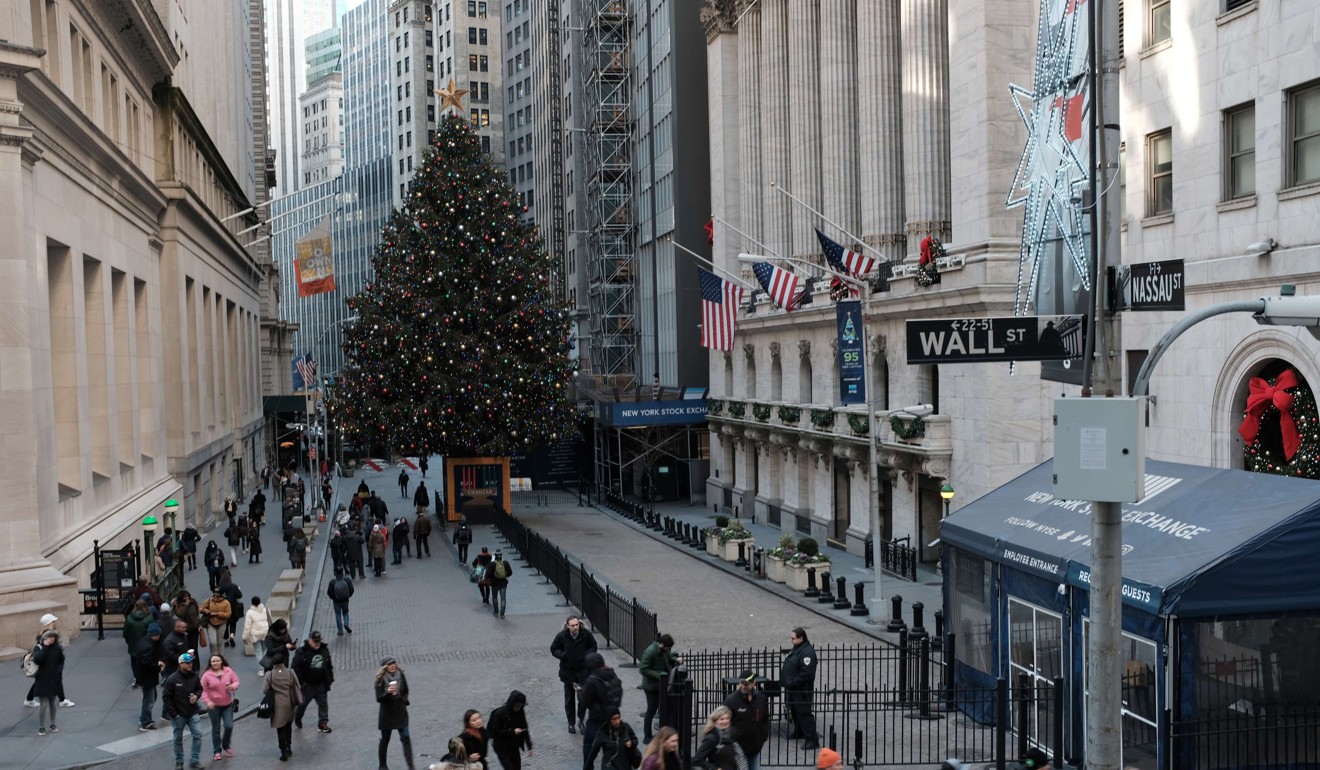
Bloodletting continues on Wall Street, as major US indices fall 2 per cent to hit 14-month lows
- No market segment went unscathed ahead of the US Fed’s meeting this week
US equity indices slid to their lowest close in 14 months as investors weighed the impact of the Federal Reserve on growth in an economy already anxious over trade, geopolitical tensions and a possible government shutdown.
Wall Street’s major indices each slid more than 2 per cent.

Speaking in a CNBC interview, DoubleLine Capital’s Jeffrey Gundlach suggested that US stocks are in a bear market. He also said that the Federal Reserve should not raise interest rates. Those comments triggered early bloodletting, which worsened in the afternoon.
“The markets right now are emotionally drained and are very prone to sell-offs,” said Oliver Pursche, chief market strategist at Bruderman Asset Management in New York. “It’s really about sentiment, and the Gundlach statement didn’t help the market.”
Chinese start-ups turn to Southeast Asia in trade war, NYSE exec says
The Dow Jones Industrial Average fell 507.73 points, or 2.11 per cent, the S&P 500 lost 59.96 points, or 2.31 per cent, t and the Nasdaq Composite dropped 156.93 points, or 2.27 per cent. Stocks overall were at 14-month lows.
The technology, health care and consumer sectors led the rout, but no segment of the benchmark went unscathed. Insurance stocks plunged after a court ruling jeopardised Obamacare, while Johnson & Johnson sank on fresh worries its asbestos scandal will intensify.
At one point, the Dow Jones Industrial Average dropped more than 600 points. The Russell 2000 Index of smaller companies entered a bear market. The US dollar dropped, while Treasuries gained. West Texas crude settled below US$50 for the first time since October 2017 as glut fears grew.
Gundlach’s bearish comments added to investors’ skittishness, which had been fanned earlier in the session as the National Association of Home Builders Housing Market Index indicated home builder sentiment had fallen to a three-and-a-half-year low.
A profit warning from British retailer ASOS raised concerns about weakening consumer strength despite robust US retail sales data last week. The S&P 500 Retailing Index fell 3.2 per cent, and shares of Amazon.com Inc dropped 4.1 per cent. Amazon was the biggest drag on the Nasdaq and the second-biggest drag on the S&P 500.
“Because of the profit warning, there is an overall question of holiday spending,” said Kim Forrest, senior portfolio manager at Fort Pitt Capital Group in Pittsburgh.
Investors: get set for 2019, the year of living dangerously
But a dovish statement from the Federal Reserve indicating a slower pace of interest-rate hikes could lift market sentiment, investors said. The Federal Open Market Committee is scheduled to meet on Tuesday and Wednesday.
Investors will be scrutinising the Fed’s statement Wednesday, as well as Jerome Powell’s news conference, for clues as to its intentions for 2019. One market observer has already weighed in: US President Donald Trump tweeted Monday that it was “incredible” the central bank was considering a rate hike, given low inflation and a strong dollar.
“The stock market, in particular, is very vulnerable to all of these speculations as to what’s going on, politically what’s going on outside our borders, who’s tweeting what, what the Fed’s going to do on Wednesday,” Terri Spath, chief investment officer at Sierra Mutual Funds, told Bloomberg TV.
Additional reporting by Bloomberg

